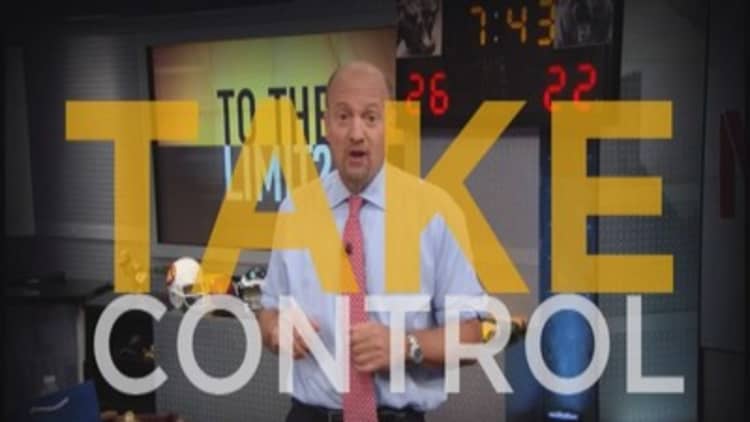
Many investors consider a 401(k) to be the holy grail of retirement investing, but Jim Cramer thinks it has some serious flaws.
"Your 401(k) is important, but it has its downsides — plenty of them," the "Mad Money" host said.
While Cramer does think that it is important to contribute to a 401(k), he is not part of the crowd that thinks you should max out the limit.
A few downsides of a 401(k) are that some people complain about high management fees and administrative costs. For Cramer, the worst part about the 401(k) is the lack of control over his money and lack of choice in what he can invest in.
"I believe that the best way to invest, as you know, is to buy a diversified portfolio of individual stocks and do the homework on each one of them — ideally one hour per week per stock — so you know when it is time to buy more, when it is time to sell something, and when it is time to sell everything," Cramer added.
The problem is that most 401(k) plans don't give you the option. Instead it will let you choose between a couple of stock and bond funds, and Cramer is generally not impressed with the selections.
Cramer's recommendation is to contribute as much money to your 401(k) that is needed to get the full company match, and then stop. At that point, the rest of retirement savings should go into an IRA until that is maxed out.
While Cramer is a proponent of both an individual retirement account (IRA) and a 401(k), he recommended to first start with contributions to a 401(k) if it is available. Most companies will match contributions to a certain point, which is like getting free money.
However, there is a caveat to contributing to a 401(k), and that is what the money is used to invest in.
Investors should not use much of their 401(k) funds to buy stock in the company that employs them, Cramer said.
One of the key components to investing is diversification. Otherwise, too much of a portfolio could be exposed to the same sector, which could introduce an enormous amount of risk.
However, being successful at capital preservation means knowing the importance of saving money and preventing loss. Without this, don't even think about investing in stocks, he said.
"You can make a fortune in the market, but if you're hemorrhaging money everywhere else, than a healthy portfolio isn't going to do you much good," Cramer said.
The three keys to success in capital preservation are paying off credit-card debt, having health insurance and getting disability insurance. Without these things crossed off the list, investing just doesn't make sense.
When there is a 10 percent decline in the , Cramer says you should take advantage and double down on your money. That means to put twice your normal 401(k) contribution amount.
He recommends investing in a low-cost index fund or an actively managed fund that operates like an index fund with a manager who has a long record of consistent out-performance.
Most likely, this approach will not make a huge difference in five years, but over 40 years it will mean tens or even hundreds of thousands of extra dollars. Taking an active, rather than passive, approach is the only way to go in this age of investing.
Conventional wisdom teaches that investors need to reduce as much risk as possible when investing retirement money. Cramer disagrees.
A little risk in stocks with higher returns will ensure a wealthy retirement.
"When you, either in your 401(k) or your IRA or just your discretionary investing account, put money into things like Treasury bonds or stable value funds, you're effectively taking that money off the table. You're saying, this money — I'm not going to use it to generate more wealth, I just want to keep it safe," Cramer said.
Cramer's rule to remember when selecting bond allocations is to go by age. Here are his recommendations for bonds, by order of age:
- Younger than 30: No reason at all to own bonds
- In your 30s: 10 to 20 percent of your portfolio
- In your 40s: 20 to 30 percent of your portfolio
- In your 50s: 30 to 40 percent of your portfolio
- 60 to retirement: 40 to 50 percent of your portfolio
- After retirement: Own some stocks, especially high yielding stocks that can generate more income with less risk, approximately one-third of your portfolio



